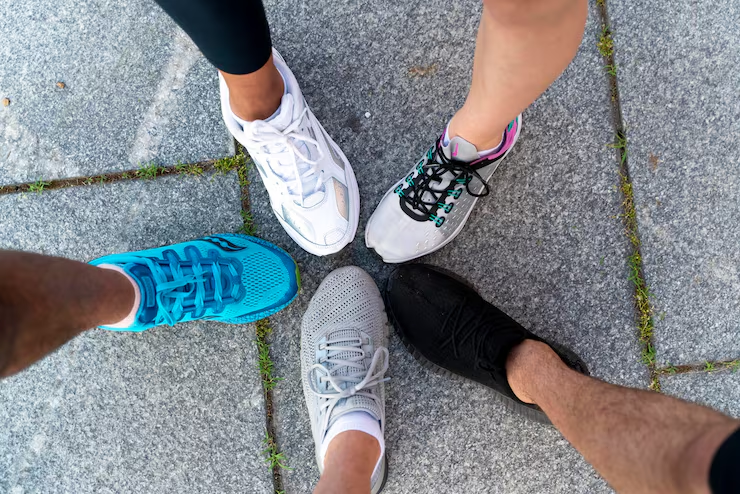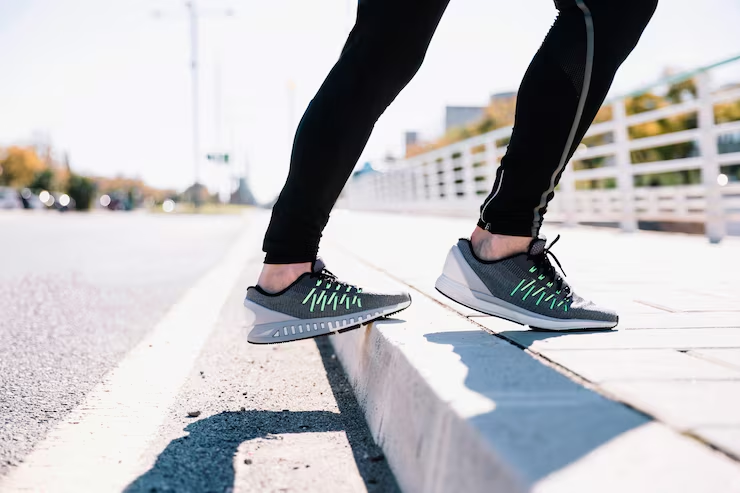
Few things affect foot health as much asthe shoes you wear. Whether you’re a casual walker or a dedicated runner, theright footwear can protect your feet, reduce the risk of injury, and make everystep more comfortable. Unfortunately, many patients choose shoes based onfashion or marketing hype rather than function. As a podiatrist, I’ve seenfirsthand how the wrong shoes can lead to problems like plantar fasciitis, bunions, or stress fractures. The good news isthat selecting the right pair doesn’t have to be complicated when youunderstand the basics.
Your feet are the foundation of yourbody. They absorb shock, support your weight, and keep you moving. A poorlydesigned shoe or one that doesn’t match your foot type can cause pain in notonly the feet but also the knees, hips, and lower back. Over time, repeatedstress in the wrong shoes can contribute to chronic injuries that limitactivity. Proper footwear, on the other hand, cushions impact, aligns yourgait, and supports healthy movement.
Although walking and running may looksimilar, they place very different demands on the feet. Running generates up tothree times your body weight in impact with each step, while walking producesmuch less force but requires more stability for longer periods of time.
Walking shoes tend to have more flexiblesoles, lower heel-to-toe drop, and built-in support for extended standing orslow movement. Running shoes usually feature more cushioning, energy-returntechnology, and variations designed for different types of runners, fromsprinters to marathoners. Using the wrong shoe type can increase strain — forexample, running in walking shoes may not provide adequate shock absorption.
One of the biggest determinants inchoosing shoes is your foot type. People with flat feet need stability ormotion-control shoes that prevent excessive inward rolling (overpronation).Those with high arches often require cushioned shoes to absorb shock andencourage a more neutral gait. Individuals with a neutral arch generallybenefit from a stability shoe that balances support and cushioning.
A quick way to get an idea of your foottype is the “wet test.” Wet your foot, step on a piece of paper, and observethe footprint. A full imprint suggests flat feet, while a narrow midsectionsuggests high arches. A balanced footprint falls in between.
When selecting walking shoes, prioritizea flexible sole that allows the foot to roll naturally from heel to toe.Cushioning in the heel and ball of the foot helps absorb repetitive impact. Asnug but not tight fit around the heel prevents slipping, while a roomy toe boxprevents irritation of the toes and nails. Lightweight materials improvecomfort for daily use, especially if you’re on your feet for work.
Running shoes should provide a blend ofcushioning and stability tailored to your stride. Key features include asupportive midsole, breathable uppers to reduce moisture, and a heel-to-toedrop that matches your running style. Runners prone to injury may benefit fromshoes with rocker soles that guide smooth forward motion. Specialty storesoften perform gait analyses to help match runners with the right shoe category:neutral, stability, or motion-control.

Many patients buy shoes that are toosmall, assuming they will “break in.” In reality, shoes should fit comfortablyfrom the start. Others choose shoes based on looks rather than support,especially with trendy minimalist or fashion sneakers. Wearing worn-out shoesis another frequent issue. The average running shoe lasts about 300–500 milesbefore its support degrades, while walking shoes may last longer depending onuse. Finally, people often stick with one brand forever, but foot structure andshoe technology evolve over time — meaning it’s wise to re-evaluate yourfootwear every few years.
Even if shoes look fine, the internalcushioning and support break down with use. Signs it’s time to replace shoesinclude worn tread, creasing in the midsole, or new aches in the feet and legsafter activity. For runners, tracking mileage is helpful. For walkers or thoseusing shoes daily, paying attention to comfort is key. If you notice foot painthat eases in new shoes but worsens in old ones, it’s time for a replacement.
One myth is that expensive shoes arealways better. While high-end shoes often use quality materials, the mostimportant factor is whether the shoe matches your foot type and activity level.Another misconception is that orthotics can fix any shoe. While orthotics add support,they can’t compensate for shoes that lack basic stability or fit poorly.Finally, barefoot or minimalist shoes are not universally beneficial; whilesome runners thrive in them, many develop injuries without proper adaptation.
Always try on shoes at the end of the daywhen your feet are slightly swollen, ensuring a true-to-life fit. Wear thesocks you plan to use during activity. Walk or jog around the store to testcomfort and stability. Don’t hesitate to size up if necessary — your longesttoe should have about a thumb’s width of space from the end of the shoe.Consulting a podiatrist or a specialty running store can provide professionalguidance, especially if you’ve had foot injuries before.
The best shoes for walking and runningare not necessarily the trendiest or the most expensive. They are the ones thatmatch your unique foot type, activity level, and comfort needs. Choosing wiselycan prevent injury, relieve pain, and make every step more enjoyable. Forpatients dealing with recurring foot or ankle discomfort, pairing proper shoeswith professional podiatric care is the best way forward. Healthy feet start withsupportive footwear, and with the right pair, you can keep moving withconfidence.